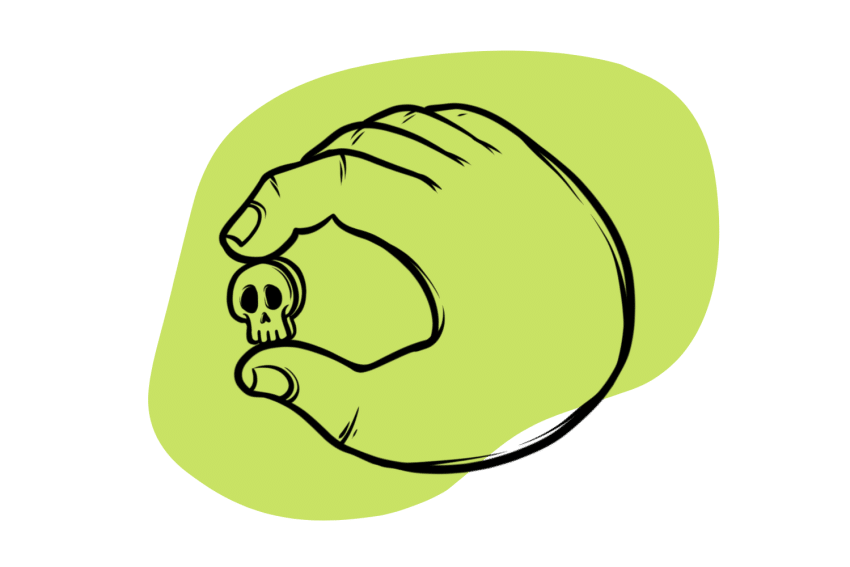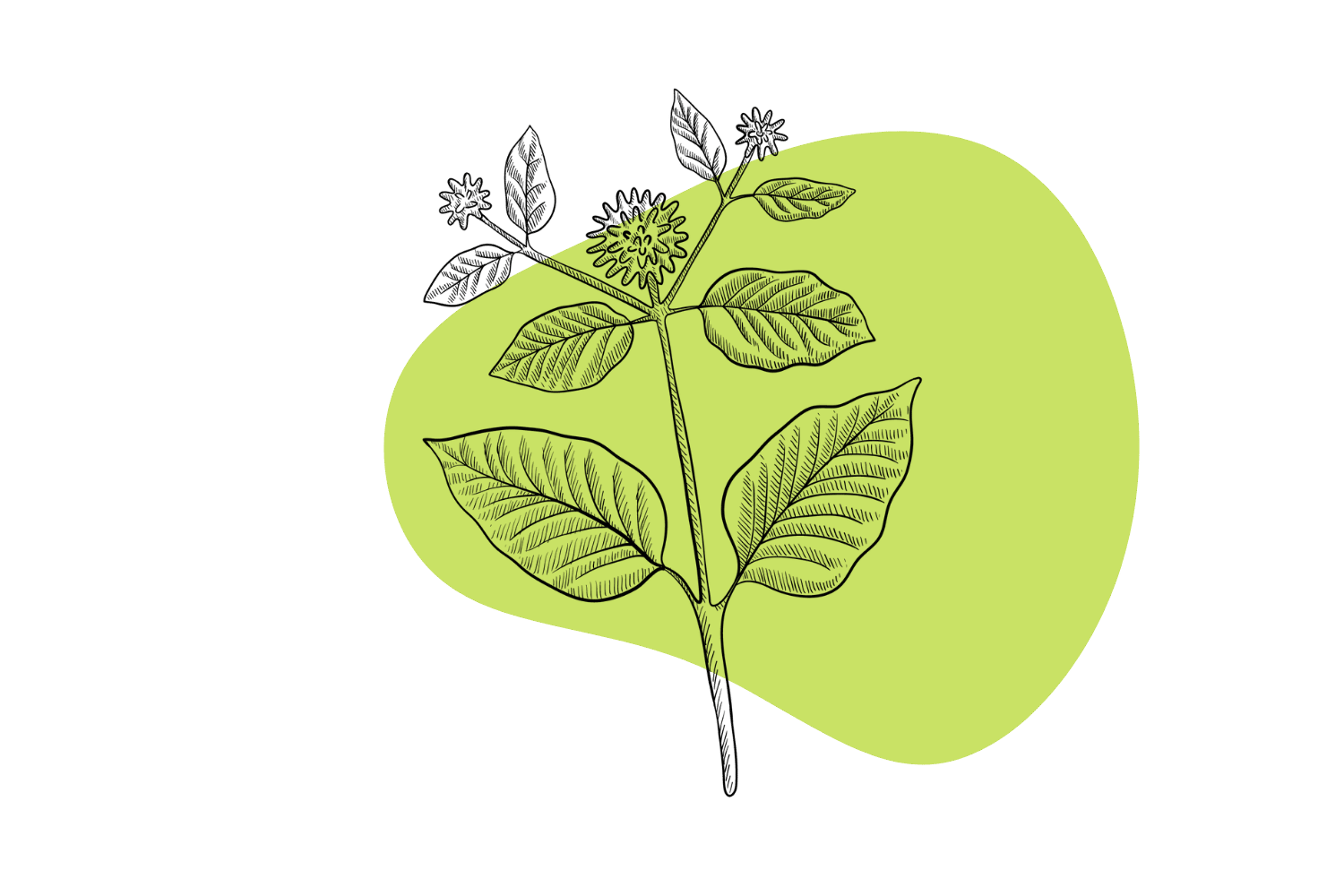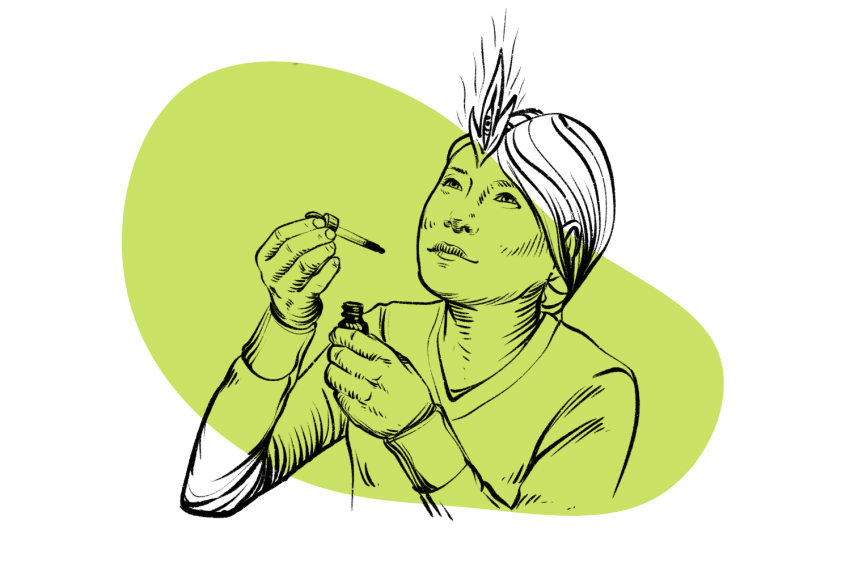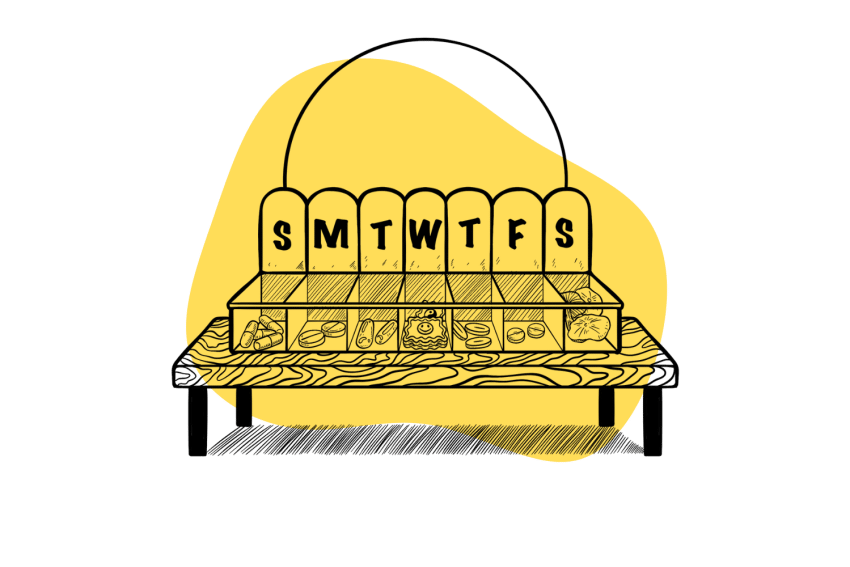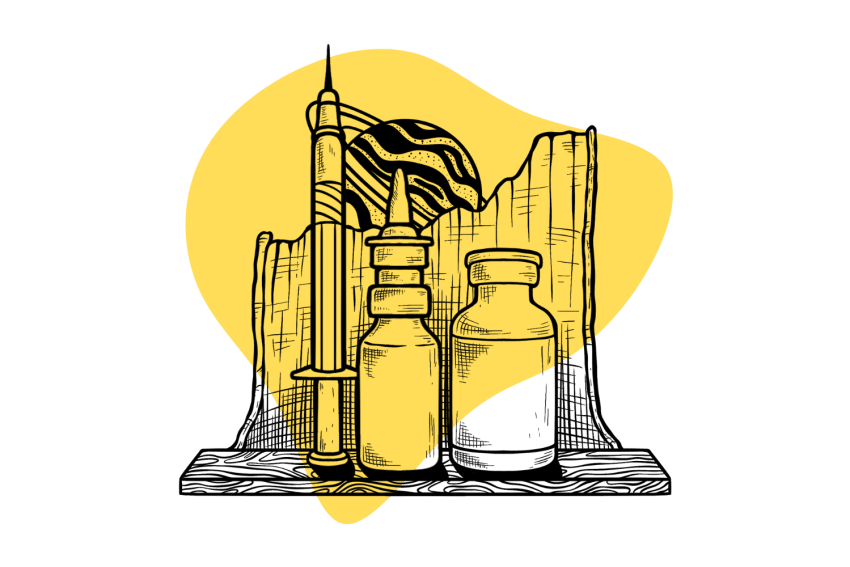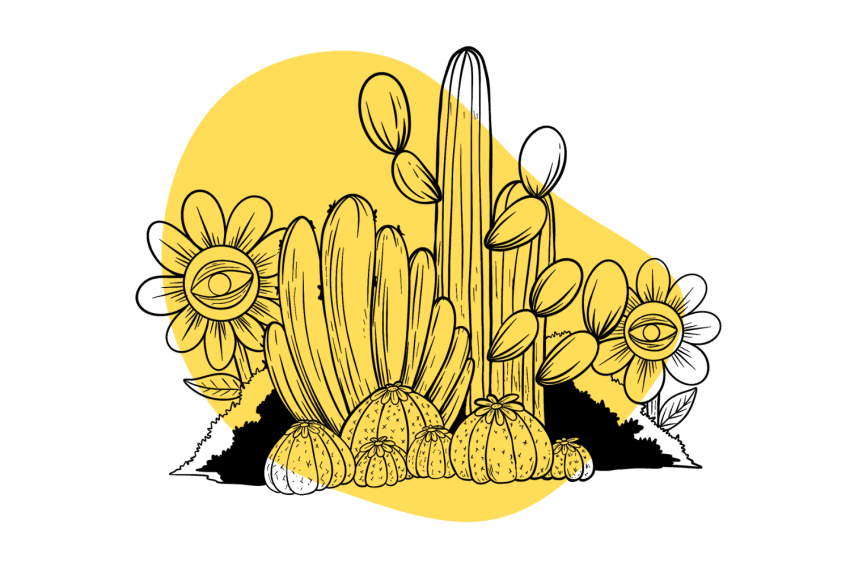From Taboo to Trend: Why Microdosing Magic Mushrooms is Taking Over
With the stigma surrounding psychedelic use slowly melting away, public interest in microdosing magic mushrooms is surging — and for good reason…
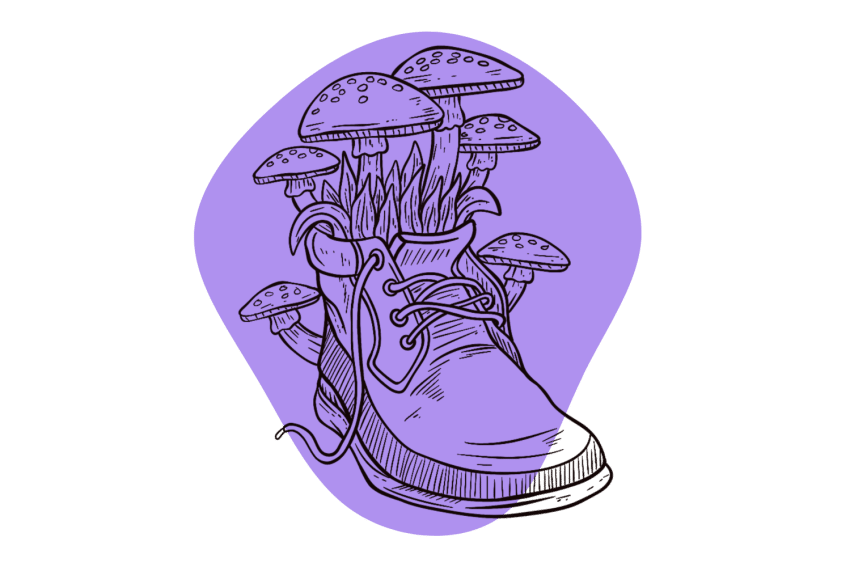
For years, magic mushrooms were shrouded in stigma — associated with hippies and illegal drug use. But with the recent psychedelic renaissance, the trend of microdosing psilocybin has resurfaced, challenging what many people once thought about these psychedelic fungi.
Microdosing involves taking sub-perceptual doses of a psychedelic substance. The dose is too low to get high, but that doesn’t mean they aren’t doing anything.
On the contrary, microdosing is believed to facilitate the creative process, improve focus and concentration, and help stabilize one’s mood and general outlook on life. They’re used alongside habits like journaling and habit engineering to get as much out of life as possible.
Let’s begin with the basics.
What Is Microdosing?
Microdosing is taking about 10% of what’s considered an “active dose” of a psychedelic compound. This dose is too small to cause changes in perception but still delivers subtle changes in cognitive function.
Advocates for microdosing shrooms claim it helps to enhance cognitive function, increase creativity and energy levels, and improve overall mood and well-being — as a sort of nootropic.
The goal of microdosing isn’t to get high; rather, it’s to take advantage of the potential therapeutic benefits of the drug while remaining fully functional. People who take microdoses normally take them before heading to work or school.
In contrast, a standard dose of shrooms (around 1-3 grams) for recreational or therapeutic sessions is intended to induce a more intense and overtly psychedelic experience. You’re not likely to carry on with your normal routine, as a psychedelic trip is deeply immersive and all-consuming.
The most common substances people turn to for microdosing are magic mushrooms and LSD (lysergic acid diethylamide) — but other substances can be used as well. Some common alternatives are any lysergamide (AL-LAD, 1P-LSD, ETH-LAD, PRO-LAD, or ALD-52), MDMA, mescaline (including both peyote and San Pedro), 2CX compounds (2C-B, 2C-C, or 2C-D), Amanita muscaria, and even marijuana (Cannabis sativa).
Magic Mushrooms 101
The term “magic mushrooms” is an all-encompassing term referring to any species of psilocybin or psilocin-containing fungi. There are a surprising number of species that contain these active ingredients. In fact, more than 400 species of magic mushrooms have been identified so far. Some were even discovered as recently as 2023 (Psilocybe stametsii).
The most common species of magic mushroom used today is Psilocybe cubensis. Within this species, there are hundreds of strains that vary in appearance, potency, and effects. Some of the most popular strains of P. cubensis mushrooms include Golden Teacher, Penis Envy, and Koh Samui.
Magic mushrooms have been part of various indigenous cultures for religious and healing practices worldwide for centuries.
The entheogenic compounds in psychedelic shrooms, psilocybin, and psilocin, mainly interact with serotonin (5HT2A) receptors, producing changes in how we perceive sensory information.
When you hear talk of microdosing mushrooms, it’s typically referring to Psilocybe cubensis, as there seems to be the most research surrounding this shroom species.
What Are the Benefits of Microdosing Magic Mushrooms?
The evidence for microdosing shrooms or any other psychedelic drug is mixed. On top of this, there’s very limited scientific research surrounding the effects of microdosing psilocybin. Most of the research thus far has been focused on psychoactive doses (over 1 gram equivalent of dried Psilocybe cubensis).
Still, there’s an abundance of personal accounts and survey-based studies that suggest that this practice can be a useful tool when used with the right intention and alongside other habits or lifestyle changes.
The main (alleged) benefits of microdosing magic mushrooms include boosting creativity, enhancing mood and life outlook, increasing focus and concentration, and boosting mental energy.
It’s difficult to measure things like creativity, mood, and satisfaction with life — which is why the most popular studies on this subject are done using surveys.
Dr. James Fadiman’s book on microdosing, The Psychedelic Explorer’s Guide, presents a series of surveys he’s collected from participants taking microdosing on a regular basis.
Some of the results of his survey include the following reported benefits:
- Increased focus and concentration
- Greater access to flow states
- Enhanced curiosity and creativity
- Improved creative problem solving
- Heightened empathy
- Increased self-efficacy
- Greater self-awareness
- Better emotional control
- Increased energy
- Establish new habits and cognitive patterns
- Relief from cluster headaches and migraines
- Reduced stress and anxiety
Fadiman also suggested that microdosing could be useful for addressing certain mental health conditions, including attention deficit disorder (ADD), general anxiety, depression, and insomnia. However, he does emphasize that more research is needed to understand its risks and full potential.
More recently, an online study published in the Harm Reduction Journal quantified the benefits of microdosing LSD and psilocybin [1]. The study aimed to develop a codebook of microdosing benefits and challenges (MDBC) based on the qualitative reports of a real-world sample of 278 microdosers.
The microdosers in the study reported two main benefits:
- Improved mood
- Improved focus and mental clarity
Studies like this on microdosing research could complement the existing research on full-dose psychedelic treatments, helping to inform researchers and clinicians as they embark on further experimental research in the coming years [2,3].
The Challenges of Microdosing Psilocybin
While microdosing shrooms have been associated with various benefits, there are also some potential challenges to consider.
That same study in the Harm Reduction Journal looking at the potential benefits of microdosing psilocybin reported physical discomfort. It increased anxiety, which impacted their ability to focus and stay concentrated and their energy levels.
Not to mention the legal challenges of attaining high-quality and safe magic mushrooms, which could pose additional uncertainties.
Reports on adverse effects of mushroom microdosing are rare, but it’s still worth reminding people that research is quite limited and new. And we don’t have any long-term studies looking at the effects over several years.
Related: Where are Magic Mushrooms Legal?
What Does Microdosing Psilocybin Feel Like?
Microdosing psilocybin can feel different for different people and may vary depending on the specific dosage and individual’s sensitivity.
The basis of microdosing is to remain below the threshold for full-blown psychedelic effects. So you shouldn’t be able to notice any perception changes.
Instead, you might feel some subtle differences in mental energy, motivation, and fluidity of thought. Some users report feeling more socially anxious, some less. Some feel a stronger sense of connection to their environment or other people; others feel like they want to isolate themselves.
The effects are different for everybody, and there are no hard-fast rules on what a microdose should feel like.
That said, people who tend to report the greatest benefit from microdosing are doing much more than simply taking microdoses. It seems magic mushrooms work as a sort of “expander” for whatever one’s current mental status is.
What do I mean by this?
People who work on cultivating a focused, productive, motivated, or relaxed mental state through other means (like journaling, cultivation of specific daily habits, or meditation) tend to experience an expansion of these beneficial mindstates after taking the magic mushroom microdose.
Overall, the effects of microdosing psilocybin are generally described as “subtle, but noticeable.” Users may need to experiment with different dosages and regimens to find the best approach for them.
When just starting out, we advise users to start with a very low dose (like 0.1 grams) and increase gradually to around 0.3 grams max.
How to Microdose Magic Mushrooms
There are a lot of opinions on the optimal dosage regimen for microdosing magic mushrooms. While the best schedule is the one that works best for you — we tend to use and promote the Fadiman approach as the best place to start.
Dr. James Fadiman put forward a protocol for microdosing to standardize the process to make research more effective. It’s also a protocol that makes a lot of sense when you consider things like metabolism, tolerance formation, and the pharmacodynamics of psilocin.
We’ll base some of the information on how to microdose magic mushrooms on his suggestions and personal findings in our microdosing journey.
1. Set An Intention
Setting an intention before microdosing can help you focus your experience and get more out of it. Most people microdose shrooms for self-optimization and treat them as a nootropic.
It can be helpful to have a goal in mind, whether for productivity or emotional healing. By setting an intention, users can better direct their thoughts and actions during their experience, leading to a more fulfilling outcome.
This can also help you integrate other lifestyle changes to reflect your goals, such as establishing healthy habits (exercise, meditation, diet).
2. Prepare Your Dose
Fadiman suggests taking one-tenth of a “normal” dose of magic mushrooms to begin with.
The average psychoactive dose of Psilocybe cubensis mushrooms is around 1–5 grams. So a microdose falls somewhere in the ballpark of about 0.1 to 0.5 grams total.
As we mentioned at the start of this article, there are many kinds of magic mushrooms, which may have varying potencies of psilocybin, which can affect the doses. The most common are Psilocybe cubensis shrooms, which have an average psilocybin content of around 0.60-1%.
Other factors make impact how potent you should make your capsules, like your weight. To make calculating this easier, try our magic mushroom dose calculator.
Double-check the potency of the DXM you’re using, and look for the addition of other compounds such as acetaminophen which can cause severe liver-toxic side-effects at this dose.
Taking your microdose can be as simple as eating small pieces of the dried (or fresh) mushrooms — however, most people prefer to pre-measure microdose capsules. You can prepare your capsules in bulk and take them across several weeks or months.
Alternatively, you can prepare magic mushrooms for microdosing by brewing a weak tea, infusing them into honey, or making microdose chocolates.
You can sometimes even find companies preparing professional microdose products for sale.
3. Set Your Dosage Schedule
There are several schools of thought regarding the frequency one should microdose, but the truth is that there isn’t really a one-size fits all approach to it. It’s a matter of preference and what feels right for the individual, so finding the right frequency may take some time and experimentation.
However, there is a common thread in these recommendations — it’s important to take breaks from microdosing.
Even when the compound wears off, there should be a residual effect, allowing you to leverage the benefits even on the microdosing rest days.
Dr. Fadiman’s approach to microdosing psychedelics is to take a dose on 1 day, no dose on day 2 and day 3, and repeat. Fadiman established this regimen to standardize the micro-dosing process when he was gathering surveys for more consistent data.
The psychedelic work week looks like taking microdoses 5 days in a row and taking 2 days off, repeat.
My favorite microdosing schedule is Dr. Fadiman’s 1 day on 2 days off, but I have experimented with three days on and two days off, which seemed to work well for me, too, for daily focus and sports performance.
When combined with lifestyle changes that work towards certain long-term goals, the benefits of microdosing shrooms should become stronger over a longer period of time.
Even with long-term use, you should consider taking breaks from micro-dosing too.
A common practice is to microdose for 6–8 weeks consistently and then take one to two months off — again, this is a matter of personal preference.
Frequently Asked Questions for Microdosing Shrooms
Answering our most common questions related to microdosing magic mushrooms…
1. What’s the Difference Between Micro- & Macro-Dosing Magic Mushrooms?
Microdosing involves taking 1/10th of a regular dose of magic mushrooms with the goal of self-optimization without experiencing the drug’s intoxicating effects that may interfere with everyday life.
While macrodosing involves taking the standard or higher doses of magic mushrooms for a full-blown psychedelic experience (1-5 grams).
2. What’s the Best Time of Day to Take Microdoses?
It makes the most sense to start your microdosing plan in the mornings, as many people find that taking them in the mornings can help with energy and concentration throughout the day.
Psychedelics, even in these very small, sub-perceptual doses, tend to have stimulating effects that can last for several hours (up to 6), so it’s not the most suitable late in the day, as it can keep you up at night.
3. How Do Shrooms Work?
Magic mushrooms contain entheogenic compounds called psilocybin and psilocin, which have a very similar molecular structure to serotonin, a neurotransmitter that plays a key role in mood, cognition, and perception.
Psilocin binds to serotonin receptors (5-HT2A) to activate them, causing changes in dopamine, norepinephrine, and other brain activity and connectivity.
The effects of shrooms will depend on how much is consumed and the individual’s body chemistry, but it’s generally known to affect one’s thoughts and mood and in high doses, alter one’s perception.
4. What Happens if I Take Too Many Shrooms?
If you’re doing it right, a microdose of shrooms shouldn’t be noticeable, so don’t go back in for more if you feel like you’re not feeling the effects.
Taking too many shrooms can lead to a full psychedelic experience, which can get in the way of your regular functioning for school or work.
If you go even beyond the standard dose for shrooms, you might start to feel very uncomfortable.
Some of the potential effects of taking too many shrooms include:
- Nausea
- Stomach upset, vomiting, diarrhea
- Intense hallucinations and altered perceptions can feel very overwhelming
- Dizziness and disorientation
- Panic attacks
- Psychotic symptoms: delusions and hallucinations that persist even after the effects of the shrooms have worn off.
5. What Are the Side Effects of Microdosing Shrooms?
The side effects of microdosing shrooms aren’t very common, but they can still happen, depending on the individual’s physiology.
Some of the reported side effects of microdosing psilocybin shrooms include nausea, upset stomach, headaches, and anxiousness, which can affect energy levels and one’s productivity.
There also may be some negative drug interactions when taking shrooms alongside medication and supplements, which is why it’s important to do your research and speak with a trusted healthcare professional before integrating something new into your routine.
6. Can I Prepare Magic Mushroom Microdose Capsules at Home?
Making your own DIY microdose capsules is easier than you might think. To do this, you’ll need a scale — one sensitive enough to weigh 0.01 of a gram for accuracy, as well as some empty capsules.
Capsule machines can be handy for making a bunch of capsules at once and give you more control over your dose size and formulations.
Some people will make Scooby Snax and add compounds such as ginger, ginseng, and bee pollen to enhance some of the effects of the shrooms and also to mitigate some of the side effects of mushrooms, such as fatigue and stomach upset.
References
- Anderson, T., Petranker, R., Christopher, A., Rosenbaum, D., Weissman, C., Dinh-Williams, L. A., … & Hapke, E. (2019). Psychedelic microdosing benefits and challenges: an empirical codebook. Harm reduction journal, 16(1), 1-10.
- Liokaftos, D. (2021). Sociological investigations of human enhancement drugs: The case of microdosing psychedelics. International Journal of Drug Policy, 95, 103099.
- Petranker, R., Kim, J., & Anderson, T. (2020). Microdosing as a response to the meaning crisis.

